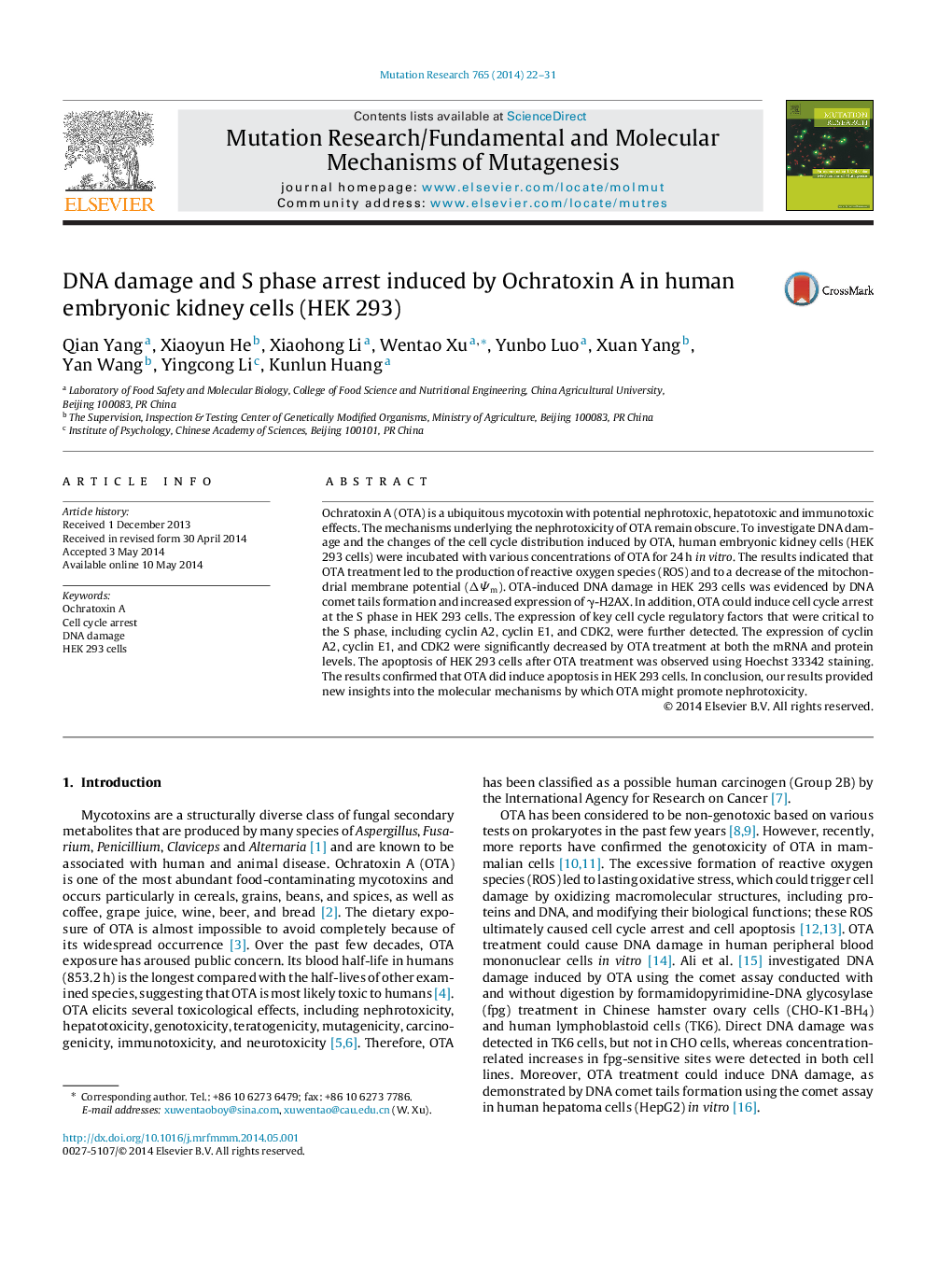| Article ID | Journal | Published Year | Pages | File Type |
|---|---|---|---|---|
| 2146331 | Mutation Research/Fundamental and Molecular Mechanisms of Mutagenesis | 2014 | 10 Pages |
•OTA-induced oxidative damage was involved in DNA damage.•OTA could induce cell cycle arrest at the S phase.•The S phase arrest induced by OTA was closely correlated with DNA damage.•Cyclin A2, cyclin E1 and CDK2 were involved in S phase arrest.
Ochratoxin A (OTA) is a ubiquitous mycotoxin with potential nephrotoxic, hepatotoxic and immunotoxic effects. The mechanisms underlying the nephrotoxicity of OTA remain obscure. To investigate DNA damage and the changes of the cell cycle distribution induced by OTA, human embryonic kidney cells (HEK 293 cells) were incubated with various concentrations of OTA for 24 h in vitro. The results indicated that OTA treatment led to the production of reactive oxygen species (ROS) and to a decrease of the mitochondrial membrane potential (ΔΨm). OTA-induced DNA damage in HEK 293 cells was evidenced by DNA comet tails formation and increased expression of γ-H2AX. In addition, OTA could induce cell cycle arrest at the S phase in HEK 293 cells. The expression of key cell cycle regulatory factors that were critical to the S phase, including cyclin A2, cyclin E1, and CDK2, were further detected. The expression of cyclin A2, cyclin E1, and CDK2 were significantly decreased by OTA treatment at both the mRNA and protein levels. The apoptosis of HEK 293 cells after OTA treatment was observed using Hoechst 33342 staining. The results confirmed that OTA did induce apoptosis in HEK 293 cells. In conclusion, our results provided new insights into the molecular mechanisms by which OTA might promote nephrotoxicity.
